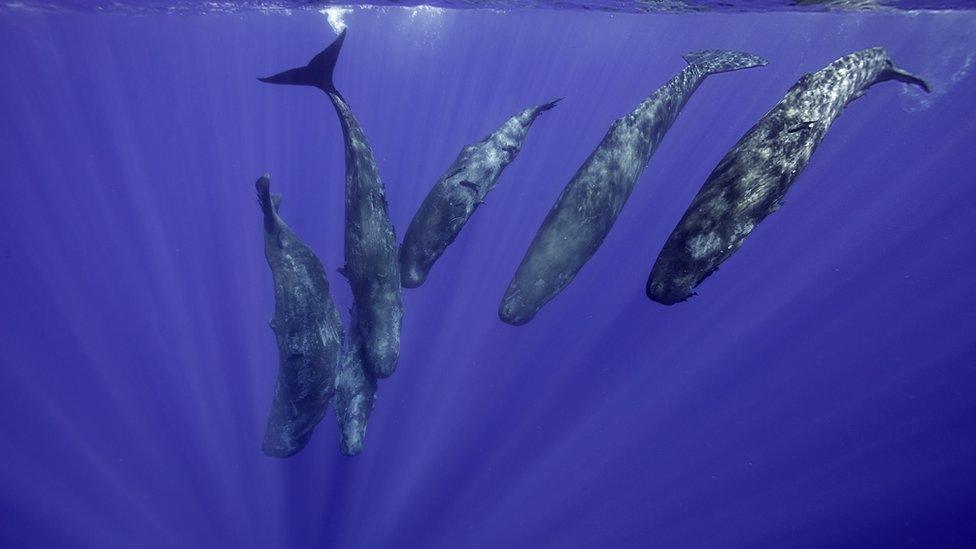Sperm whales have their own alphabet scientists say
- Published
- comments

Have you ever wondered what animals would say if they could speak?
Well scientists think they might be one step closer to discovering just that.
Researchers at the Massachusetts Institute of Technology, studying a clan of sperm whales in the East Caribbean, found the mammals use clicks a bit like morse code.
Previous research into sperm whale communication shows that each clan has their own accent and uses the clicks to tell other whales who they are.
Can sperm whales 'talk'?
Sperm whales are known to be very sociable and often travel in groups of between 15 and 20 whales, known as pods.
They communicate with each other across thousands of miles with a series of rhythmic clicks, called codas.
It's very noisy - they're considered to be one of the loudest ocean animals with their clicks reaching up to 230 decibels (dB) underwater - louder than a jet engine, which is around 150 dB.
Now, scientists think these clicks are far more complex and more like human language than first thought.
How did scientists discover the whale 'alphabet'?
Researchers looked at data and analysed recordings from around 60 different members of the Eastern Caribbean sperm whale clan.
They used this information to create what they call a "sperm whale phonetic alphabet" of different click combinations - a bit like morse code.
Morse code is a type of electronic communication.
It uses a series of dots and dashes to represent the alphabet, numbers and punctuation.
Researchers say the rhythm, tempo and duration of the clicks, as well as extra clicks, are sequenced together forming codas which are then joined together - making phrases.
Pratyusha Sharma, at the Massachusetts Institute of Technology, who led the study said it's similar to the way humans combine sounds to form words.
Sperm whale clicks are a little similar to morse code which you can see uses a combination of dots and dashes to create letters, numbers and punctuation
She said: "These extra clicks, we call ornaments, are suffixed on top of different codas.
"These occur more towards the beginning and end of turns in an exchange."
It's thought there's so much information given in these clicks that they helps pods make decisions and co-ordinate tasks.
- Published1 February
- Published11 January
- Published26 November 2023
